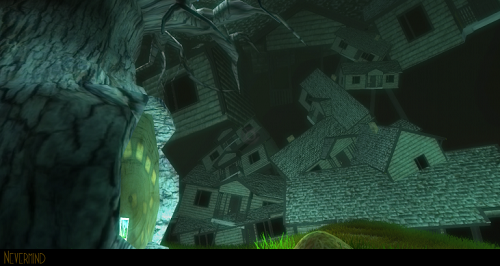Unlike traditional horror games which seek to provide adrenaline filled fear, Nevermind is a biofeedback-enhanced game whose ambitions are opposite: it rewards players for remaining calm under stressful situations. The game uses a heart rate monitor to measure anxiety and enhances the level of difficulty as the player becomes stressed, but if a player manages to control his or her fear, difficulty levels drop ― in essence, compensating the player for conquering thefear response.
The goal, creator Erin Reynolds tells Gizmag, “is for players to learn how to not let their fears get the best of them in nerve-wracking situations and hopefully carry over their gameplay-acquired skills into the real world.” Her team will research the game’s impact on players and its potential use in anxiety treatment therapy.
Anxiety and fear treatment
Habituation, the process of decreased nervous system arousal after continuous exposure to the same stimuli, is key in anxiety treatment. It’s what enables individuals to overcome their anxiety establishing a familiarity, or boredom, if you will, that decreases the nervous response. This principle is hard coded into human genetics and has helped improve our hunting/gathering ancestors’ survival odds by allowing them to focus on more novel stimuli. Nevermind seeks to diminish the nervous response of fear itself, by initiating the habituation principle while simultaneously positively reinforcing calmness.
How does Nevermind detect stress levels?
Stress levels are detected using a Garmin cardio chest strap, similar to the wearable sensors that gauge sports performance. The strap communicates the player’s heart rate variability (HRV) to the game through an ANT and USB stick, measuring heartbeat duration which determines whether a “fight or flight,” response has been activated; this is the equivalent of a stress response.
A game made to conquer fear
Nevermind’s horrific elements are not rooted in classic horror troupes like monsters and zombies, fantasy if you will, but rather in the subtle eeriness brought on by a warped and macabre atmosphere; it’s an atmosphere that can be described as wrong, if wrong were a noun. Players assume the role of a “Neruoprober,” a science-figure tasked with diving into the minds of traumatized patients in an effort to help them release their subdued and troubling memories, memories that have an impact on the patient’s mental health (from the fictional perspective of the game).

Rooting out these memories is a matter of solving puzzles and collecting Polaroid’s while traversing through disturbing environments. These can range from a maze of wrecked cars in which a player follows the guiding sound of belting car horn, to a grotesque bloodied kitchen full of flies and rotting meat.

Colors and lighting are central in depicting the abandonment and oddness of the atmosphere
The challenges themselves grow in complexity as the player is frightened. For example, milk starts pouring from every window and hole in the room in the kitchen scenario, making it difficult to navigate and find the objective. If the player fails at containing their anxiety, then the milk-level continues to rise until the player eventually drowns, transporting them back to the Institute; overcoming obstacles is a matter of overcoming one’s panic impulse. Similarly, the car wreckage scenario obfuscates with disorienting imagery, making the maze increasingly difficult to escape if the player gets nervous.
“We wanted players to become aware in a very real way of when their anxiety levels were starting to become elevated and reward them for being able to manage that anxiety on the fly,” Reynolds tells Gizmag. “We knew making the environment change so significantly that it would would get their attention.”

Reynold’s designed the game as part of her Master of Fine Arts (MFA) thesis project within the University of Southern California’s Interactive Media and Games Division. The project will feature a Kickstarter campaign later in 2014, prior to launch.
Via gizmag
Advertisement
Learn more about Electronic Products Magazine





